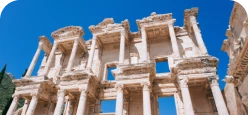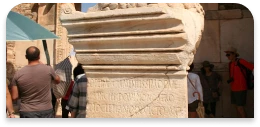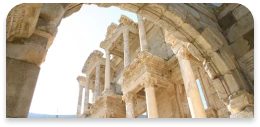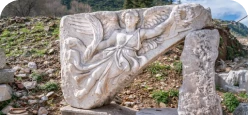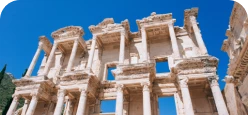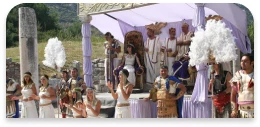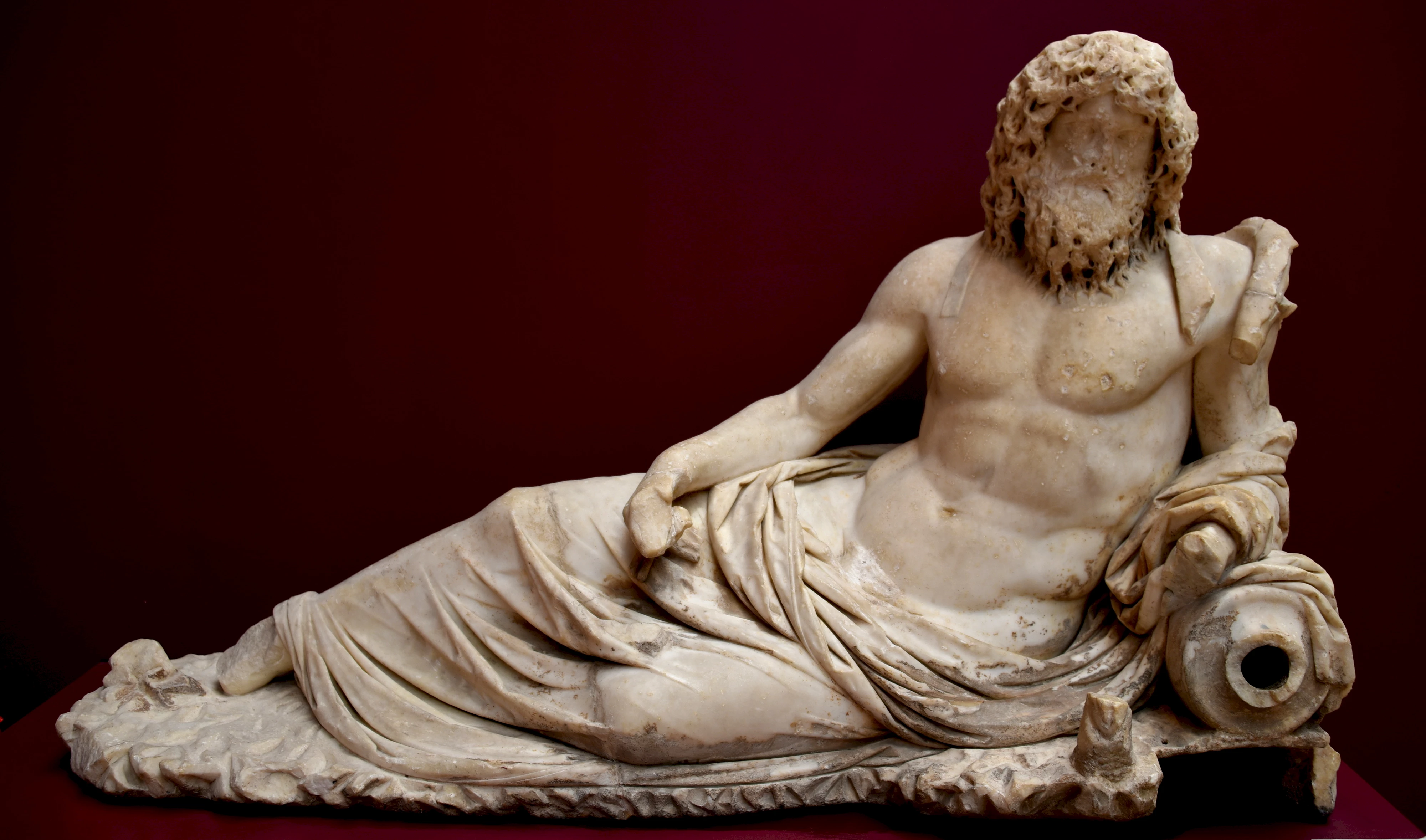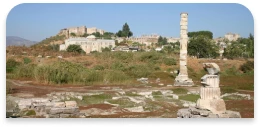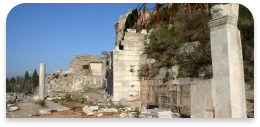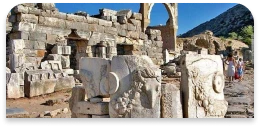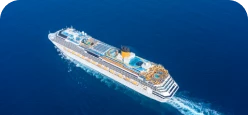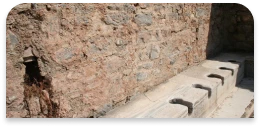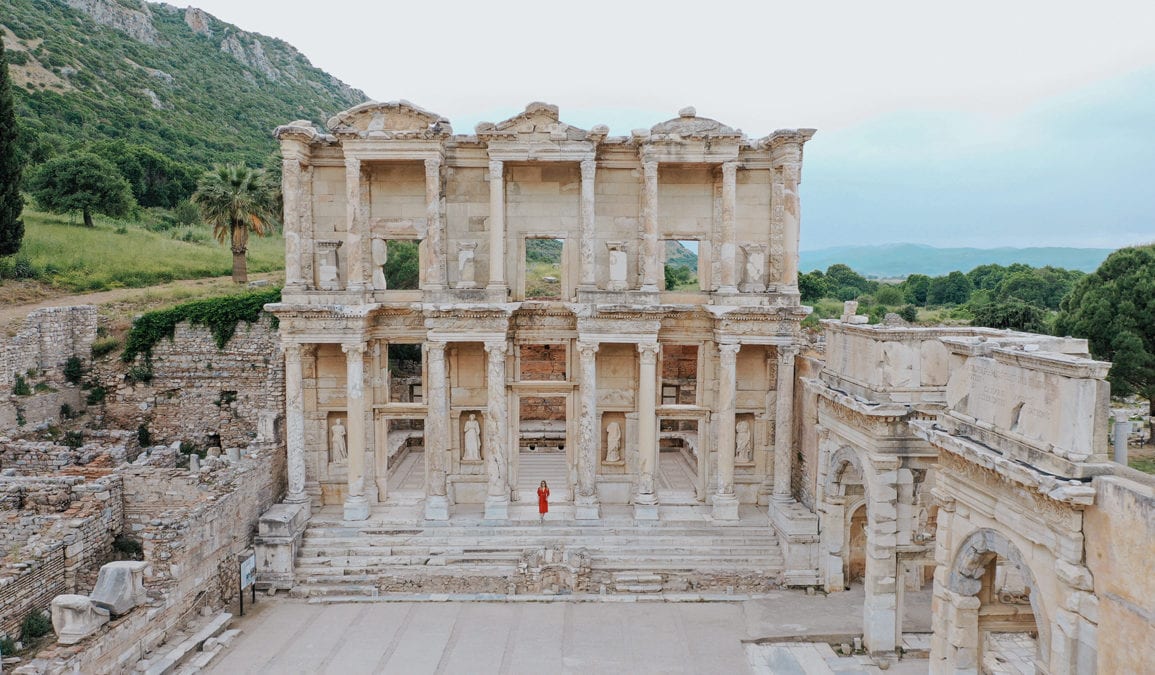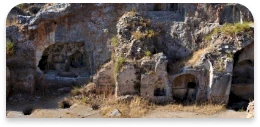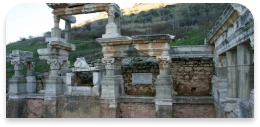Puerto de Efeso
Ephesus was one of the leading trading cities in the Roman World. The city was located by the Aegean Sea and used to have a busy port in the Antiquity. Ephesus Port was known to be ''the Gate by Which the West Visited the East''. Strabo, in a passing reference, speaks of Ephesos as the largest trade center, of Asia Minor and the most important link in the trade between East and West, a major center connecting Italy and Greece with Asia Minor. The great port created a big city with over 250,000 inhabitants in Ephesus during the Roman time.
There were three major roads from the Ephesus seaport; one road went south to the Meander Valley, another east towards Babylon via Laodicea, and a third to the north via Smyrna.
However, today, the ruins of Ephesus are quite far from the shoreline, and the once busy Port of Ephesus is completely covered with soil and dust as it was successively filled up with debris and deposits from the ancient Caystros (Küçük Menderes) River. Cayster River floodplain has been prograding seaward since mid-Holocene time and silting up of the port caused by the river is the main reason why Ephesus fell into decline and gradually abandoned over years. The area around Ephesus and the harbor turned into a swamp. Mosquitoes increased more and more. A series of malaria epidemics decimated the population and the Ephesians abandoned the city almost in one hundred years. Instead of settling in Ephesus again, they found a new port city for themselves and they called there “Scala Nuova” which means a new port.

Un puerto sin mar..
Éfeso fue una de las principales ciudades comerciales del mundo romano. La ciudad estaba situada junto al Mar Egeo y solía tener un puerto muy activo en la Antigüedad. Se sabía que el puerto de Éfeso era "la puerta por la que Occidente visitaba Oriente". Estrabón, en una referencia de pasada, habla de Éfeso como el centro comercial más grande de Asia Menor y el enlace más importante en el comercio entre Oriente y Occidente, un centro importante que conecta Italia y Grecia con Asia Menor. El gran puerto creó una gran ciudad con más de 250.000 habitantes en Éfeso durante la época romana.
Había tres carreteras principales desde el puerto de Éfeso; un camino iba hacia el sur hasta el valle del Meandro, otro hacia el este hacia Babilonia a través de Laodicea y un tercero hacia el norte a través de Esmirna.
Sin embargo, hoy en día, las ruinas de Éfeso están bastante lejos de la costa, y el Puerto de Éfeso, una vez ocupado, está completamente cubierto de tierra y polvo, ya que se llenó sucesivamente con escombros y depósitos del antiguo río Caystros (Küçük Menderes). La llanura aluvial del río Cayster se ha estado desplazando hacia el mar desde mediados del Holoceno y la sedimentación del puerto provocada por el río es la principal razón por la que Éfeso cayó en declive y fue abandonada gradualmente a lo largo de los años. El área alrededor de Éfeso y el puerto se convirtió en un pantano. Los mosquitos aumentaron cada vez más. Una serie de epidemias de malaria diezmaron la población y los efesios abandonaron la ciudad casi en cien años. En lugar de establecerse nuevamente en Éfeso, encontraron una nueva ciudad portuaria para ellos mismos y la llamaron "Scala Nuova", que significa un nuevo puerto.
La vida todavía continúa en Scala Nuova y es uno de los puertos mediterráneos más populares en la actualidad y se llama Kusadasi. Todos los días, en verano, los cruceros atracan en el puerto de Kusadasi y a muchos pasajeros de cruceros les encanta visitar la antigua ciudad portuaria de Éfeso, que se encuentra tierra adentro.

